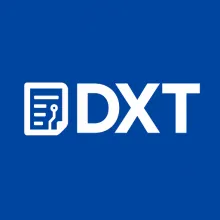
Google has launched Gemma, a family of lightweight, open-source AI models designed to compete with offerings like Meta's Llama and other readily available AI technologies. This move signifies a strategic shift, aiming to democratize AI development and foster innovation within the broader developer community.
The Genesis of Gemma
As detailed in the original Ars Technica article, Google's Gemma models come in two sizes: 2B and 7B parameters. They’re trained on a diverse dataset and optimized for performance across various tasks, from text generation to code creation. The goal is to provide developers with accessible tools to build and experiment with AI without requiring extensive computational resources.
Expanding the Toolkit: Beyond the Original Announcement
Further research unveils more about Gemma's capabilities and the context surrounding its release. Here's a deeper dive, informed by additional sources:
- Enhanced Hardware Compatibility: Gemma is designed to run efficiently on a wide range of hardware, including laptops and edge devices, as highlighted in a recent article from InfoQ. This portability is a significant advantage, allowing developers to prototype and deploy AI applications in diverse environments.
- Emphasis on Responsible AI: Google has integrated safety features and tools for responsible AI development within Gemma, as reported by Google Cloud's official blog. This includes built-in safeguards to mitigate potential biases and harmful outputs, reflecting a broader industry trend towards ethical AI practices.
- Competitive Landscape: Gemma enters a crowded market. Rivals like Meta's Llama family and open-source models like Mistral offer similar functionalities. However, Gemma's focus on hardware accessibility and integrated safety features may give it an edge, especially for developers and researchers with limited resources.
Technical Underpinnings and Performance Benchmarks
Gemma models are built upon Google's existing AI infrastructure, leveraging advancements in model architecture and training methodologies. While specifics of the training dataset are not fully public, Google claims it included a diverse range of text and code sources. Early benchmark tests, though still limited, show Gemma performing comparably with other models of similar size, with some tests, such as those found on the Google AI Blog, showing promising results on tasks like coding and reasoning. The open-source nature of Gemma allows for community contributions and further optimization, which is expected to improve performance over time.
The Future of Open-Source AI
The release of Gemma underscores the growing importance of open-source AI models. It enables a more collaborative and transparent development process, fostering rapid innovation and allowing for a wider range of users to participate in AI's evolution. This approach contrasts with the closed-source models, which often restrict access and limit the potential for broader community contributions.
Google's Gemma marks a significant step in the democratization of AI. By offering accessible, open-source models, Google aims to empower developers and researchers, fostering a future where AI development is more inclusive and collaborative. While the competitive landscape remains fierce, Gemma's focus on hardware compatibility and responsible AI practices positions it as a strong contender in the evolving world of open-source AI. The continuous refinement and community contributions will be key factors to determine Gemma's long-term impact in this rapidly changing technological frontier .
